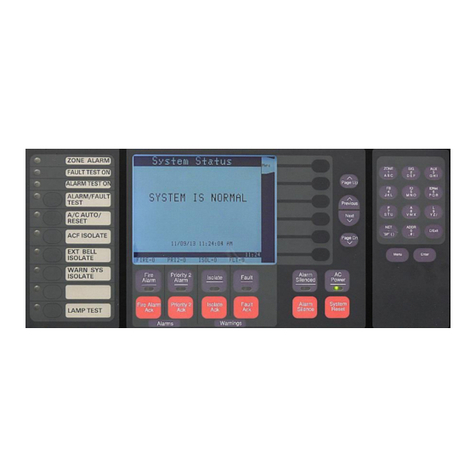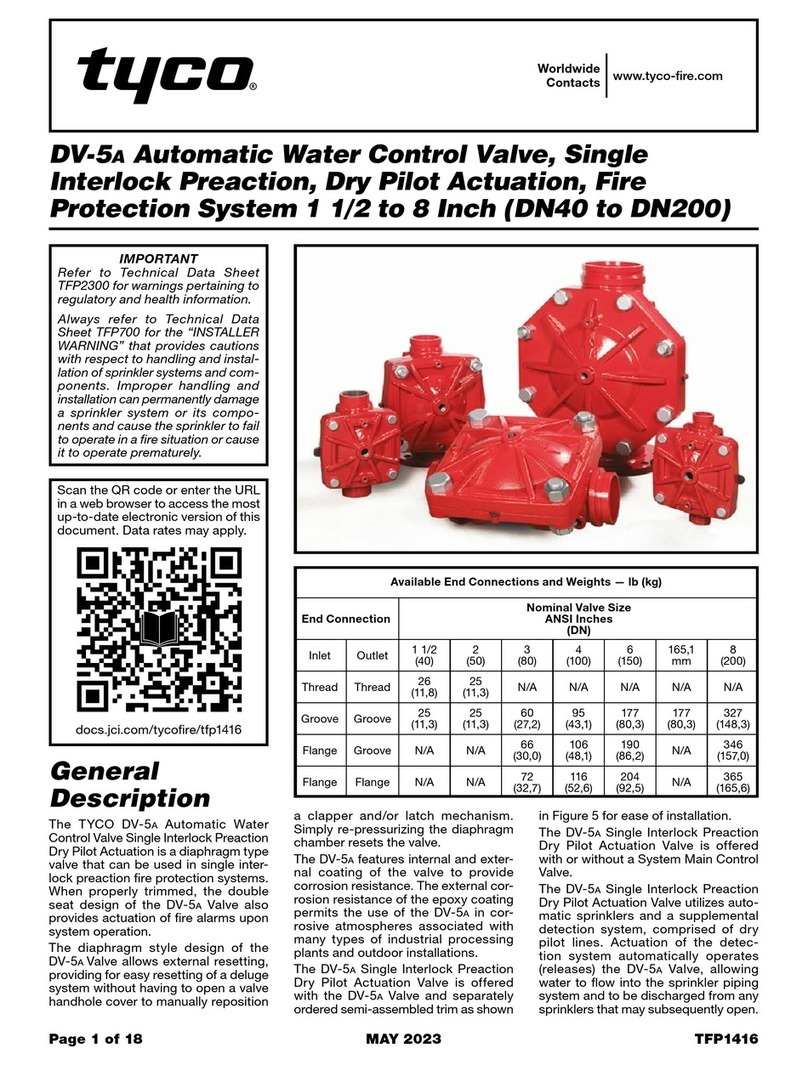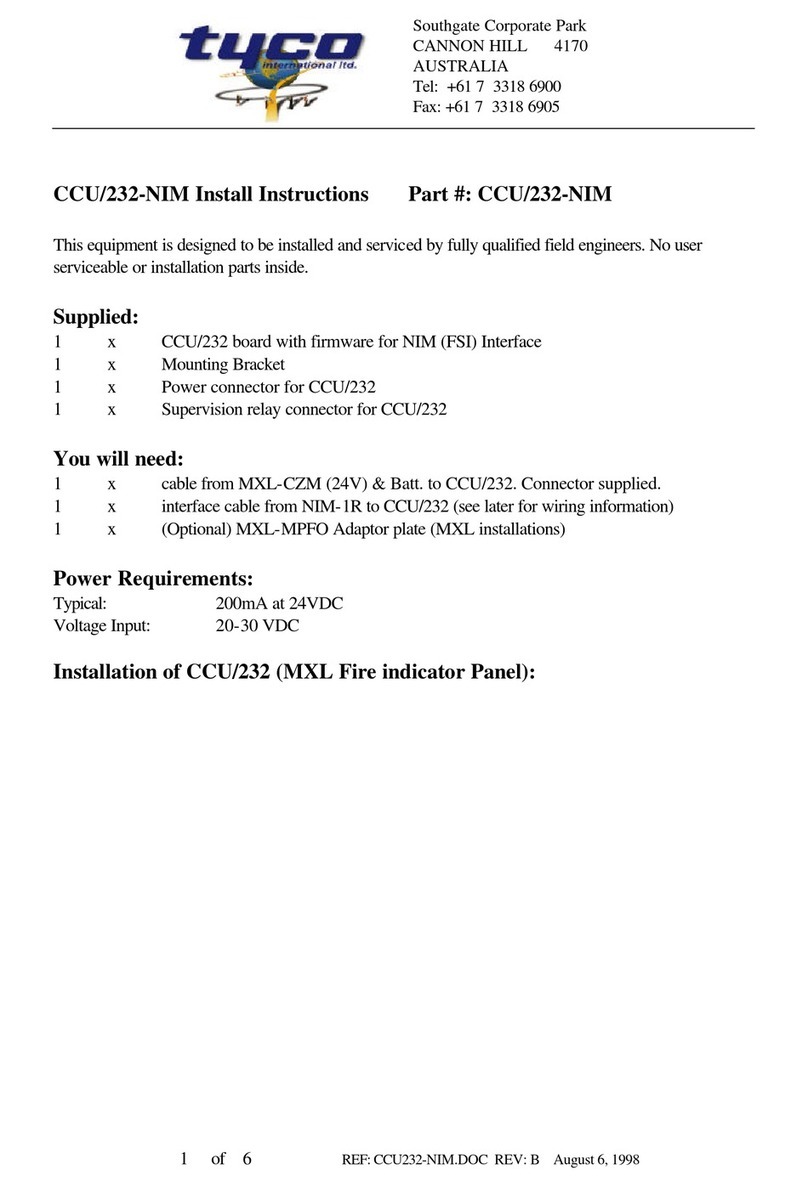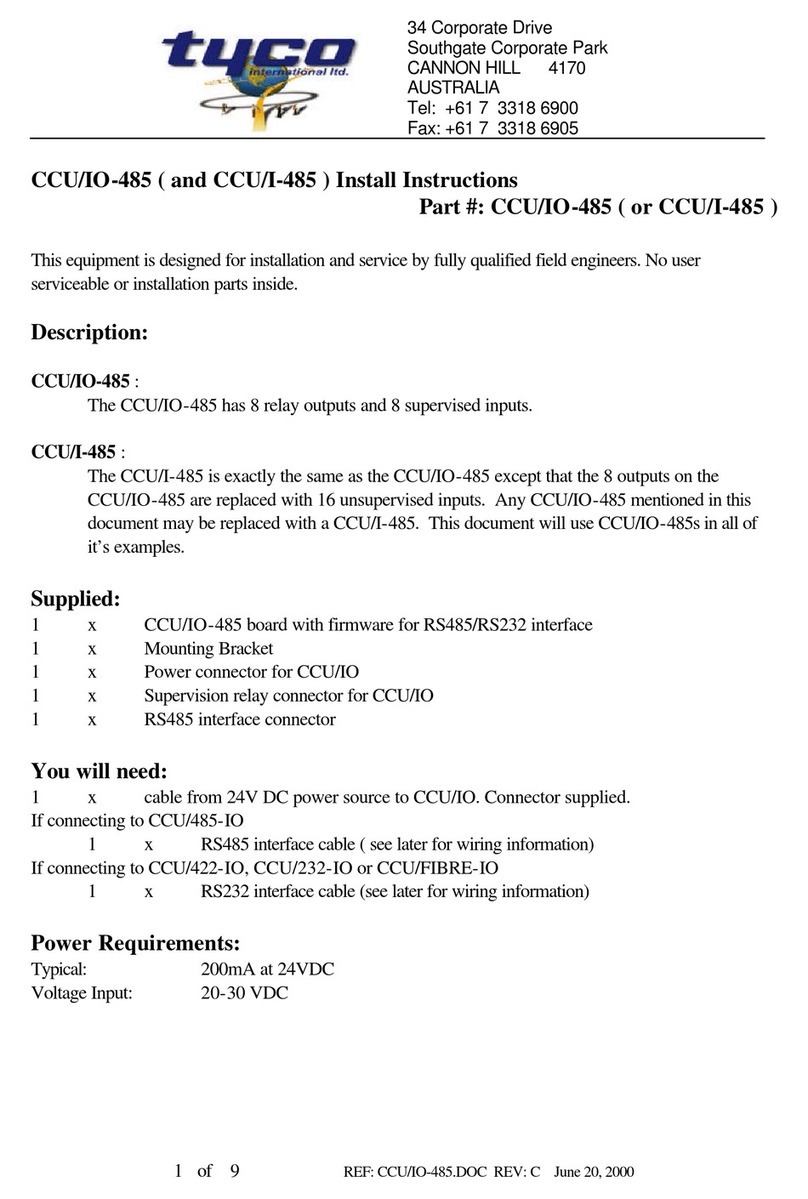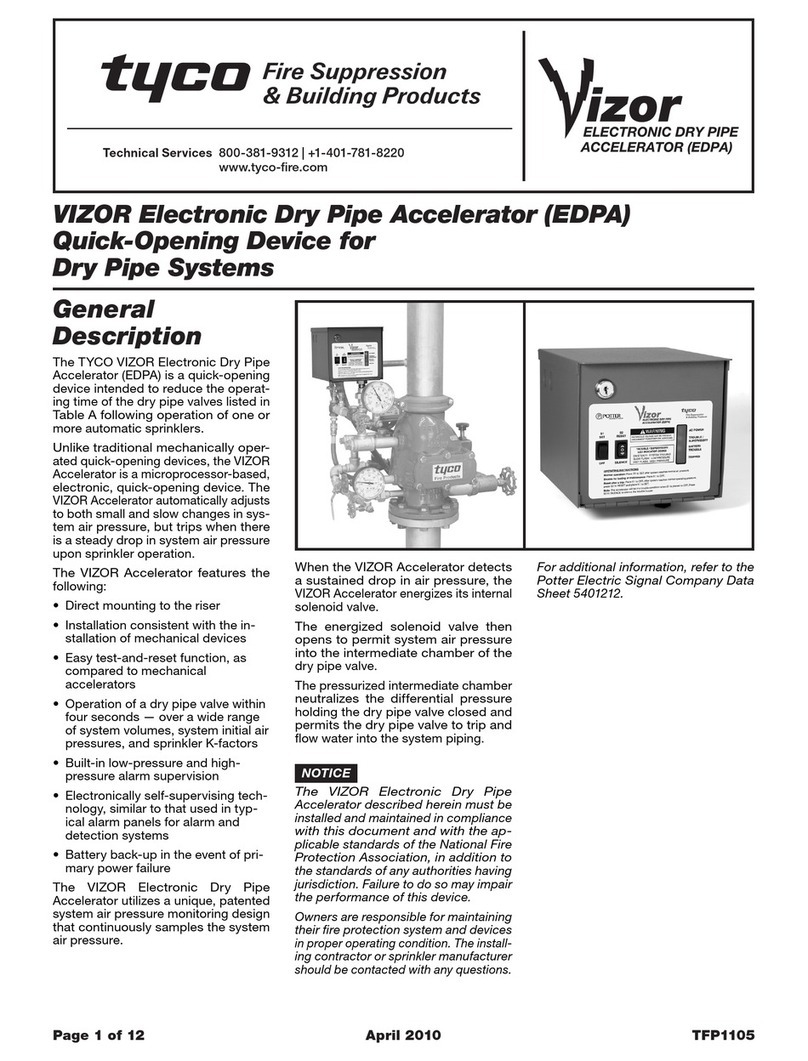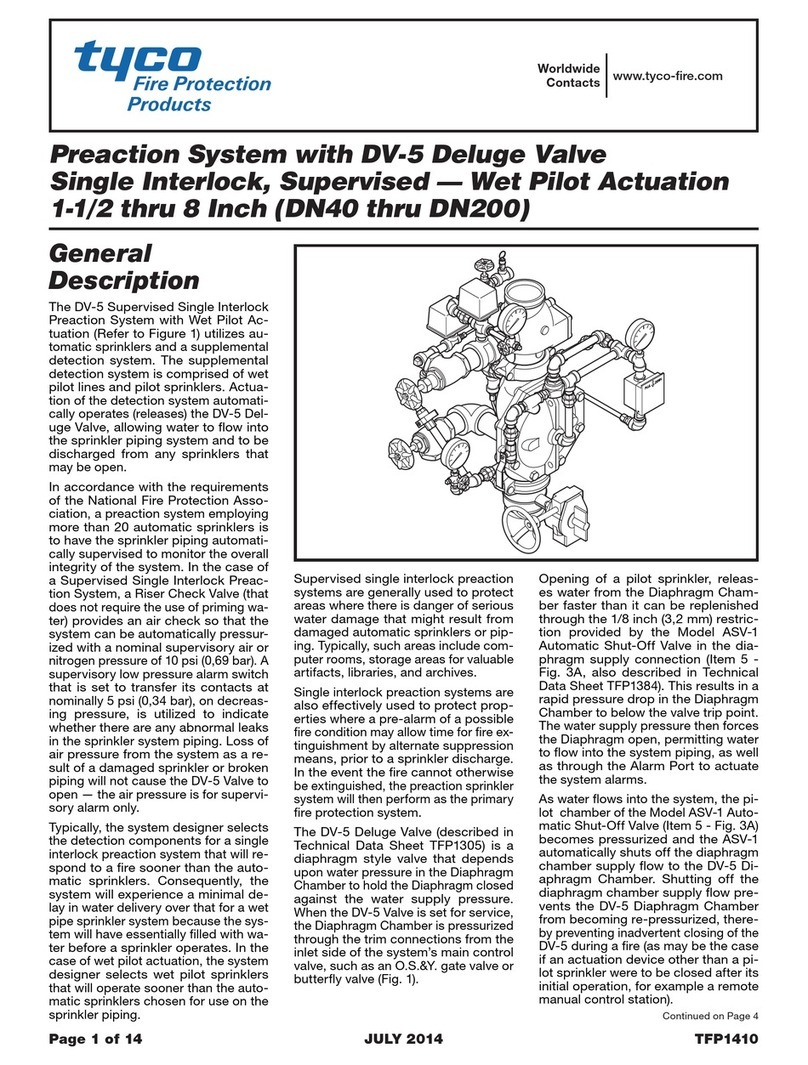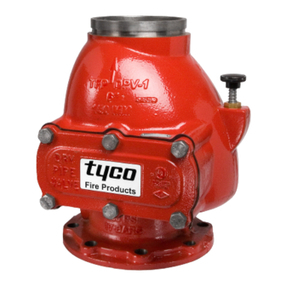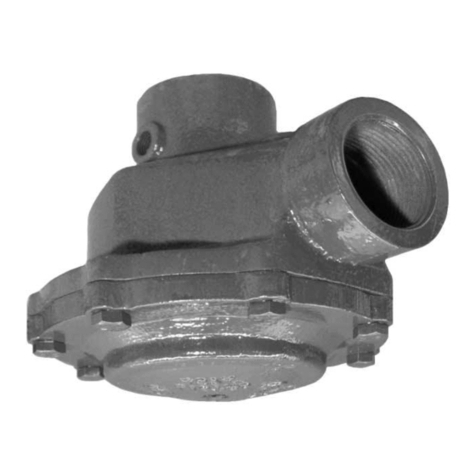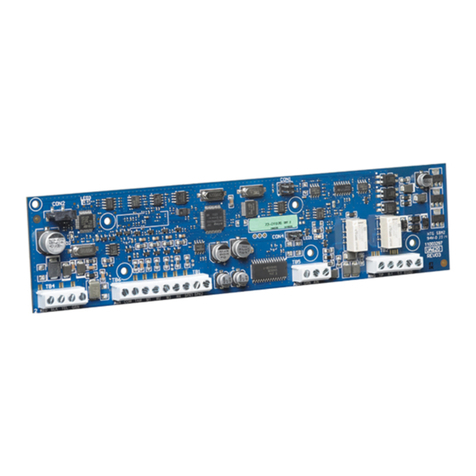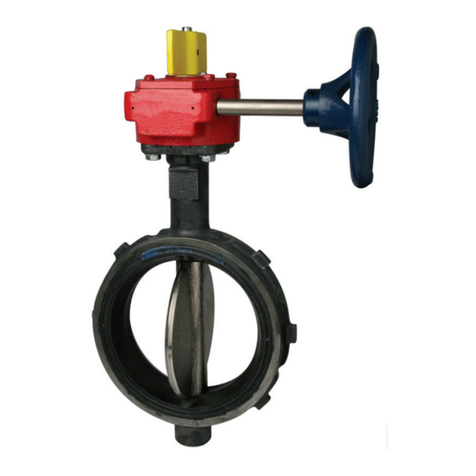
reduction in the time for the Dry Pilot Actuator to open fol-
lowing the operation of one or more automatic sprinklers.
With the optional Double Interlock Accelerator Trim
(Fig. 8), the communication between the system air pres-
sure and the Dry Pilot Actuator is made directly through
the Double Interlock Accelerator Trim.The S430 Accelera-
tor automatically adjusts to small as well as slow changes
in system pressure, but trips when there is a rapid and
steady drop in pressure (such as will occur when a sprin-
kler operates).Upon tripping, the S430 Accelerator will re-
lieve system air pressure from the Dry Pilot Actuator
faster than it can be replenished through the 3/32 inch
(2.4 mm) diameter orifice in the clapper of the 1/2 inch
Swing Check Valve (Item A6 - Fig. 8), resulting in quick
opening of the Dry Pilot Actuator following a sprinkler op-
eration.
The Model S430 Accelerator is described in Product Data
Sheet 2-5.4.10.
DESIGN CRITERIA
System Design Considerations
The automatic sprinklers, as well as the releasing panel,
fire detection devices, manual pull stations, and signaling
devices, which are utilized with the Model A Preaction
Valve must be UL Listed, ULC Listed, C-UL Listed, or FM
Approved, as applicable. Releasing panels which may be
considered for use with the Model A Preaction Valve in-
clude the Potter Electric PFC Series 100RC, PFC Series
2000RC, and PFC Series 4410. Information on the vari-
ous types of Solenoid Valves that are to be separately or-
dered for use with the Model A Preaction Valve is given in
Product Data Sheet 2-5.1.31.
NOTE
Approval by Factory Mutual is contingent on the use of an
FM Approved 24 VDC Solenoid Valve. FM only approves
solenoid valves for use in non-hazardous locations.
Because a double interlock preaction system requires
time for a drop in system air pressure to occur (in addi-
tion to responding to a separate heat detection system),
before it will allow water to enter the system piping, this
system has characteristics similar to a dry pipe sprinkler
system.Therefore, the system design considerations for a
dry pipe system are normally applied to a double inter-
lock preaction system — including a 30% increase in de-
sign area; quick opening devices for system capacities of
500 gallons (1890 litres) or more; a maximum 1 minute
water delivery time for system capacities of 750 gallon
(2850 litres) or more; and, prohibition of gridded system
piping.
The preaction valve, and all interconnecting piping must
be located in a readily visible and accessible location and
in an area which can be maintained at a minimum tem-
perature of 40°F/4°C.
NOTE
Heat tracing is not permitted for the preaction valve, or
any of the interconnecting piping. Heat tracing can pro-
mote the formation of hardened mineral deposits which
can prevent system operation. Heat tracing can also re-
sult in damage to the Model A Preaction Valve Differen-
tial Assembly.
In planning the installation, consideration must also be
given to the disposal of the large quantities of water
which may be associated with draining the system, per-
forming a flow test, or performing a system trip test.
Installation configuration and clearance dimensions are
given in Figure 10.The flanged inlet and outlet connec-
tions are faced and drilled per ANSI Standard B16.1, un-
less otherwise specified when ordered.
In order to readily perform the System Inspection Proce-
dure described in the Maintenance and Service section, it
is recommended that a System Shut-Off Valve and Sys-
tem Trip Test Flow Valve be installed above the Model A
Preaction Valve, as shown in Figure 1. The System Shut-
Off Valve should be a listed or approved (as appropriate)
indicating valve with a supervisory switch to monitor the
normally open position.
System Air Pressure Requirements
Figure 5 shows the minimum Electric/Pneumatic Double
Interlock Preaction System air pressure requirement as a
function of the water supply pressure.Use of an automat-
ic air or nitrogen maintenance device is recommended
and may be required by the Authority Having Jurisdiction.
NOTE
The dew point of the air or nitrogen must be maintained
below the lowest ambient temperature to which the Dou-
ble Interlock Preaction System piping will be exposed, or
as required by the Authority Having Jurisdiction. Accumu-
lation of water in the connection to the Dry Pilot Actuator
will lower the air pressure at which the Dry Pilot Actuator
will open and possibly prevent proper operation. Also, in-
troduction of moisture into the system piping that is ex-
posed to freezing temperatures can create ice build up
which could prevent proper operation of the system.
INSTALLATION
The Model A Preaction Valve must be installed in accord-
ance with the following instructions. Proper operation of
the Double Interlock Preaction System depends upon it
being installed in accordance with the instructions given
below. Failure to follow these instructions may prevent the
devices from functioning properly as well as void listings,
approvals, and the manufacturer’s warranties.
1. All pipe thread connections must be free of scale and
burrs before installation. Use pipe thread sealant spar-
ingly on male pipe threads only.
2. The Model A Preaction must be installed vertically as
shown in Figure 10.
3. Install the Electric/Pneumatic Double Interlock Preaction
Trim as as shown in Figures 6 and 7.
Care must be taken to make sure that check valves,
globe valves, etc. are installed with the flow arrows in
the proper direction.
Drain tubing to the Drip Funnel must be installed with
smooth bends that will not restrict flow.
4. The Differential Chamber Supply Connection shown in
Figure 10 must be connected to the water supply side of
the System Main Control Valve to facilitate setting of the
Model A Preaction Valve.
5. Connect the Air Supply Connection shown in Figure 7 to
an air or nitrogen supply. Use of an automatic air or ni-
trogen maintenance device is recommended and may
be required by the Authority Having Jurisdiction. The
Air Supply Connection is to be plugged when an alter-
nate air supply is provided to the system, as may be re-
quired for refrigerated spaces.
Refer to Figure 5 for Double Interlock Preaction System
air pressure requirements.
6. Install, as applicable, the optional Double Interlock Ac-
celerator Trim as shown in Figure 8.
STAR SPRINKLER INC.
2-4.1.10 Page 5
